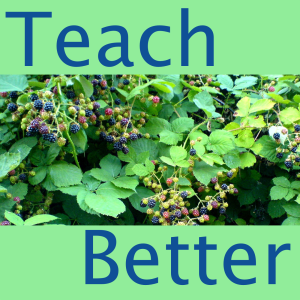
Podcast #45: Inspiring Students with Steven Strogatz
 2017-01-02
2017-01-02
In this episode Professor Steven Strogatz joins us from the Cornell Math Department. He is a world-renowned mathematician, known primarily for his work in non-linear dynamics and chaos theory, and he is the award-winning author of Sync, The Calculus of Friendship, and The Joy of x. He also happens to be one of the best teachers at Cornell. During our a wide-ranging conversation, Steve talks with us about helping students discover for themselves the joys and frustrations of mathematical thinking.
You can subscribe to the Teach Better Podcast through your favorite podcast app or simply subscribe through iTunes if you don’t have one yet.
Show Notes0:00 ⏯ Intro
0:42 ⏯ Welcome Steven!
The Calculus of Friendship: What a Teacher and a Student Learned about Life while Corresponding about Math Sync: How Order Emerges from Chaos in the Universe, Nature, and Daily Life The Joy of x: A Guided Tour of Math, from One to Infinity1:20 ⏯ No such thing as an original idea; Kids these days don’t get all our jokes
2:43 ⏯ Math: Curiosity, Discovery, and Creativity vs. Pain, Misery, and Boredom
5:00 ⏯ Most math taught to students dates from before 1700
6:00 ⏯ Many students have such a bad attitude about math by the time they reach college that it’s not hard to convince them that it’s better than they think
6:46 ⏯ Students giving their teachers a hard time (following in Gauss’s footsteps)
10:00 ⏯ How to inspire students with lecture. How important is lecturing? Getting students to fall in love with a subject so they go off and learn on their own
13:00 ⏯ What is a successful teacher? Inspiring students to teach themselves
15:25 ⏯ Why good teaching isn’t just what we see in the movies . Some students love stories. Others love applications. Others logical purity. Others like the competition. We need to serve all of them.
17:56 ⏯ How can we customize our teaching for individual students? Asking students to write their mathematical autobiography.
20:00 ⏯ Mathematical Explorations: Teaching math to students that thought they were done in high school.
21:56 ⏯ Inquiry-based learning: No lecturing and no answers to questions—Students have to figure things out themselves through activities.
Discovering the art of mathematics by amazing folks at Westfield State24:31 ⏯ Doing math with paper shapes, scissors, and puzzles.
26:30 ⏯ Having a discussion after the activity
28:30 ⏯ Embodied learning: Teaching symmetry and group theory by having students walk around and wave their hands
32:00 ⏯ It’s perfectly okay to be stumped. If you’re a cold fish teaching Socratic style, they’re going to want to do to you what they did to Socrates.
33:00 ⏯ What’s the same about teaching screen writing and math: Creativity
34:30 ⏯ Are we trying to teach skills or something more? Getting a little touchy feely.
36:00 ⏯ Intrinsic motivation vs. extrinsic motivation.
37:50 ⏯ Millionaires and Billionaires are not the same—Teaching numeracy by putting things into your own terms.
41:05 ⏯ Surgically removing misconceptions before teaching new models
42:04 ⏯ Creating math by making aesthetic choices; e.g., 0! = 1 and multiplying two negative numbers to get a positive number.
46:03 ⏯ Creativity vs. analysis—Maybe it’s not so black and white. Creative analysis and analytical creativity. 3 interesting proofs of Cauchy’s Theorem.
51:24 ⏯ Edward brings Piaget into the mix: Sensory/motor vs. concrete vs. symbols/abstractions
52:27 ⏯ The creative side of teaching: An amazing exposition on eigenvalues and eigenvectors that incorporates a physical explanation, an application, and a financial motivation
57:46 ⏯ Still making mistakes, Steve has a hard time assigning grades when students spend the semester cutting triangles out of paper: the pros and cons of portfolio grading
1:02:27 ⏯ The pros and cons of peer evaluation
More Episodes
 2015-10-05
2015-10-05
Create your
podcast in
minutes
- Full-featured podcast site
- Unlimited storage and bandwidth
- Comprehensive podcast stats
- Distribute to Apple Podcasts, Spotify, and more
- Make money with your podcast
It is Free
- Privacy Policy
- Cookie Policy
- Terms of Use
- Consent Preferences
- Copyright © 2015-2024 Podbean.com




